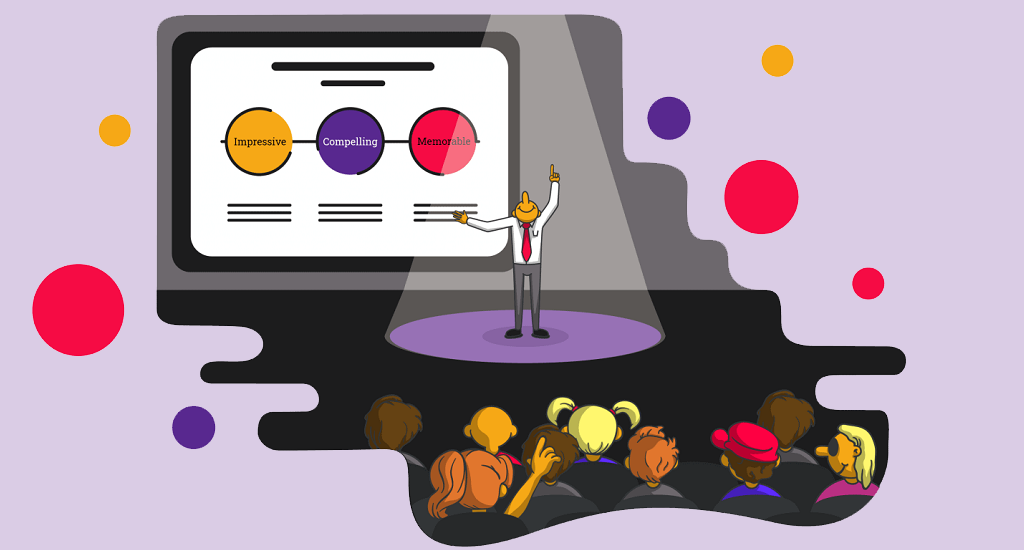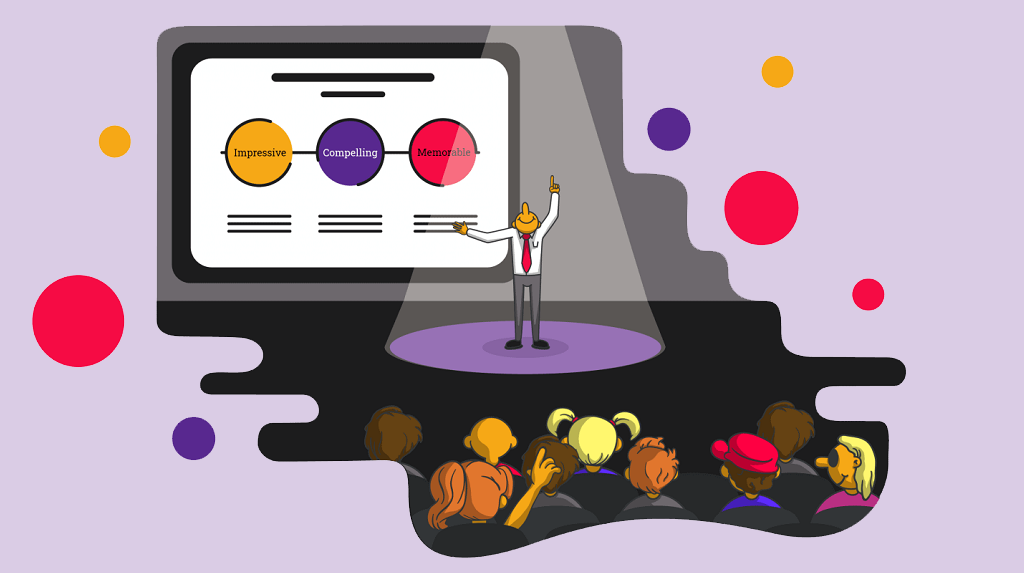- 14 July 2021
- Posted by: Canberra Innovation Network
- Category: Coworking

Our lives are undoubtedly becoming increasingly fast-paced, and the fight for attention has never been so fierce. The digital age has not hindered the fruits of presentations; it merely has reinvented the way we have to engage with an audience in a bid for their attention. The art of engagement is to have your audience check their phones less, have their eyes fixated on you, not their screen’s, and, most importantly, ensure their minds are present and haven’t already moved on to the next thing.
To put it simply, you cannot rely on your information or idea to spark engagement and ‘speak for itself’; you must design your presentation strategically to ensure attention is created and but most importantly, sustained. Your message is as good as nothing if you cannot make a meaningful connection and sustain the engagement of our audience.
Presentations and their design are not one-size-fits-all. To produce presentations that can ignite and maintain engagement, the following steps and strategies are essential.
Familiarise yourself with your audience
Prior to designing your presentation, it is critical that you gather as much information about your audience as possible. Your presentation needs to be designed around those in which you wish to engage with your audience. Therefore, developing a better idea of the audience demographic is essential – who they are, why they are attending, and what you can offer them. With a better understanding of who your listeners are, you can curate your presentation style and tailor your language to optimise audience engagement. It is important to note that the same presentation will not be successful on every audience and that is why designing your presentation with your specific audience at the forefront is vital.
Give them what they want to hear
Once you have gained the most robust understanding of your audience possible, you can better understand what they are looking for and how your presentation purpose can feel that void. The information you have collected should inform the research, structure, and style of your presentation in a way that allows you to tailor your message to have relevance to your particular audience.
As you have a deeper understanding of your audience’s needs, you can situationally place your presentation purpose (i.e., the sale of a service) as the answer. To boost your relevancy and therefore engagement, you need to embed your presentation purpose as the ‘solution’ to each audience member’s problem or need. To do this you need to be able to articulate the tangible benefits your audience member receives from your presentation purpose.
Build sustained engagement
No one wants to watch you flick through 50 slides of text walls and bullet points. Your information, product or service may be of a high calibre, but if you aren’t implementing engagement strategies, then you will lose your audience along the way. With the ‘who’ and ‘what’ identified in the first two steps, you now must now focus on the ‘how’.
Having an appropriate presentation methodology that is informed by who your audience is and what they are looking to achieve is vital – this is often something that a presentation design service or slide designers can offer. From this point, you are in a position to employ strategies aimed at heightening viewer engagement.
Multi-sensory presentations are a fundamental strategy to increase and sustain viewer engagement. Often, it is tempting to use bullet-points in presentations as they act as a cue to the presenter. However, we should not mistake bullet points as a visual medium, nor should we underestimate the audience’s ability to simply self-explain the dot points. In fact, audience members are able to read through slides 15x quicker than the presenter! The most effective alternative to bullet-point text walls is visual cues. Presentations that use informative diagrams and relevant images can offer the same prompt as a bullet-point, whilst also heightening audience attention levels. Visual aids mean that your audience needs to hear what you have to say, promoting active listening and retaining attention for longer periods of time.
Building upon the use of visual prompts in presentations – another strategy that successful presenters often employ is incomplete sequences. Designing a slide that showcases an unfinished series of information will psychologically motivate the audience to pay closer attention to what the presenter is about to say. As humans, our psychology means that we like to see the whole picture, this is known as visual dissonance, so when we see an unfinished image or sequence, we are instantly motivated to resolve the narrative. A presentation slide should not make sense without a presenter, it is important to remember slides should only be used as a tool to help your audience understand the message, opposed to the entirety of the presentation.
These strategies will undoubtedly increase audience engagement, if you found this insight into the art of engagement and presentation design interesting, please feel free to check Convinced – you can also learn more about presentation theory at their learning library!
Article Author:
Harry Wilson is a Presentation Consultant with Convinced, a presentation and pitch agency. Over the last 10 years, Harry has been involved in hundreds of successful pitches and presentations for a variety of organisations globally. Harry’s mission is to assist businesses’ ability to communicate better from the Canberra Innovation Network co-working space.

